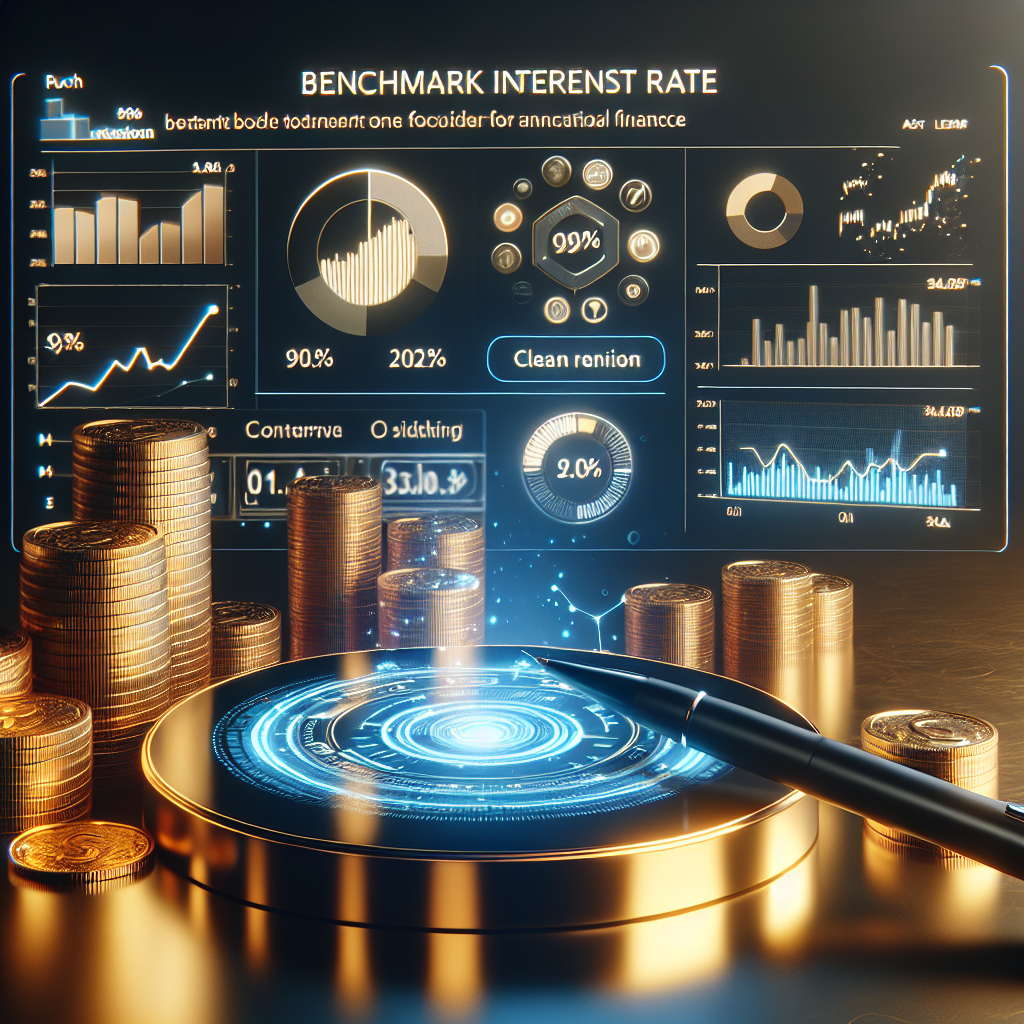meta:
description: “Explore the benchmark interest rate for 2024, its current trends, historical context, and its impact on borrowing. Get insights and predictions from experts.”
Benchmark Interest Rate 2024
Understanding the benchmark interest rate is crucial for anyone involved in finance, whether you’re a homeowner, investor, or simply a consumer. As we approach 2024, many are curious about how the benchmark interest rate will evolve and what that means for the economy.
Understanding the Benchmark Interest Rate
Definition and Importance
The benchmark interest rate serves as a standard for various types of loans and financial products. It is the interest rate at which banks lend to each other and is often set by a country’s central bank. In the United States, this rate is primarily influenced by the Federal Reserve.
Understanding this rate is vital because it affects everything from mortgage rates to credit card interest rates. When the benchmark interest rate rises, borrowing costs increase, which can slow down economic growth. Conversely, a lower rate can encourage spending and investment.
How It Influences the Economy
The benchmark interest rate plays a pivotal role in monetary policy. When the rate is adjusted, it can have widespread effects on inflation, employment, and overall economic health. A lower rate typically stimulates economic activity, while a higher rate can temper inflation by slowing down consumer spending.
Benchmark Interest Rate 2024: Current Trends
Recent Changes and Predictions
As of late 2023, the benchmark interest rate has seen several fluctuations. The Federal Reserve has been adjusting rates to combat inflation, which has remained above the target level. Economists predict that the benchmark interest rate may stabilize in 2024 as inflation rates begin to cool.
Current Predictions for 2024:
- Many analysts anticipate the rate will hover between 4.5% and 5.5%.
- The Federal Reserve may hold rates steady if inflation continues to decline.
Factors Affecting the Rate in 2024
Several factors are likely to influence the benchmark interest rate in 2024:
- Inflation Trends: Persistent inflation could compel the Fed to maintain higher rates.
- Employment Data: Strong job growth may lead to rate hikes to prevent the economy from overheating.
- Global Economic Conditions: International events, such as trade disputes or geopolitical tensions, can impact U.S. economic stability and influence interest rates.
Historical Context of Benchmark Interest Rates
Comparison with Previous Years
To understand the benchmark interest rate in 2024, it’s essential to look at its historical context. Over the past decade, rates have seen significant changes:
- 2015-2018: Rates were gradually increased from near zero to about 2.5% as the economy recovered.
- 2019-2020: The pandemic led to a rapid decrease, dropping rates back to near zero.
- 2021-2023: A series of increases were implemented to combat rising inflation.
Lessons from Past Rate Changes
Historically, changes in the benchmark interest rate have led to various economic outcomes. For instance, rapid increases can lead to recessions, while prolonged low rates can result in asset bubbles. Understanding these patterns can help predict possible outcomes for 2024.
Impact of Benchmark Interest Rate on Borrowing
Effects on Mortgages
The benchmark interest rate directly affects mortgage rates. When the Fed raises rates, mortgage rates typically follow suit. This can impact home buyers significantly:
- Higher monthly payments: As borrowing costs increase, monthly mortgage payments can rise, making homes less affordable.
- Decreased home sales: Higher rates can lead to a slowdown in the housing market as buyers hesitate to commit to higher payments.
Influence on Personal Loans and Credit Cards
The benchmark interest rate also affects personal loans and credit cards. When rates rise, borrowers may face increased interest rates on existing and new loans:
- Increased monthly payments: Borrowers with variable-rate loans will see their payments increase.
- Reduced consumer spending: Higher interest costs can lead consumers to cut back on spending, affecting economic growth.
Benchmark Interest Rate 2024: Expert Opinions
Insights from Economists
Economists are closely monitoring indicators that may affect the benchmark interest rate in 2024. Many believe that if inflation continues to decline, the Fed may pause rate hikes. However, some caution against assuming that rate cuts will occur quickly.
Predictions from Financial Analysts
Financial analysts are divided on their predictions for 2024. Some foresee a stabilization of rates, while others predict possible hikes if inflation remains stubborn. Key points include:
- Continued vigilance on inflation data.
- Potential for modest growth in consumer spending.
- Overall uncertainty that could lead to fluctuating rates.
How to Prepare for Changes in Benchmark Interest Rate 2024
Strategies for Homeowners
If you’re a homeowner, consider the following strategies to prepare for changes in the benchmark interest rate:
- Refinance now: If you have a variable-rate mortgage, consider refinancing to a fixed rate before rates increase.
- Budget for potential increases: Prepare for higher payments if rates rise, ensuring you have a budget that can accommodate changes.
Tips for Investors
Investors should also be proactive as the benchmark interest rate changes:
- Diversify your portfolio: A mix of stocks and bonds can help mitigate risks associated with rising rates.
- Monitor economic indicators: Keep an eye on inflation and employment data to make informed investment decisions.
Conclusion: What to Expect in 2024
Summary of Key Takeaways
The benchmark interest rate in 2024 will be shaped by inflation trends, employment data, and global economic conditions. As we move into the year, understanding these factors will be crucial for consumers and investors alike.
Future Outlook on the Benchmark Interest Rate
While uncertainty looms, many experts agree that a cautious approach will likely prevail in 2024. Keeping informed and prepared for potential changes can help mitigate risks and seize opportunities as they arise.
FAQs
- What is the benchmark interest rate for 2024?
The benchmark interest rate for 2024 is expected to hover between 4.5% and 5.5%, depending on economic conditions.
- How does the benchmark interest rate affect mortgages?
A higher benchmark interest rate typically leads to increased mortgage rates, resulting in higher monthly payments for borrowers.
- What factors influence the benchmark interest rate in 2024?
Key factors include inflation trends, employment data, and global economic events.
- What can homeowners do to prepare for changes in the benchmark interest rate?
Homeowners should consider refinancing to fixed-rate mortgages and budget for potential increases in payments.
- How does the benchmark interest rate impact personal loans?
An increase in the benchmark rate can lead to higher interest rates on personal loans and credit cards.
- What are economists predicting for the benchmark interest rate in 2024?
Economists are divided, with some predicting stability while others foresee potential increases dependent on inflation and economic growth.
For more detailed information, check out the Federal Reserve's official site and Investopedia's guide on interest rates.
“`





0 Comments